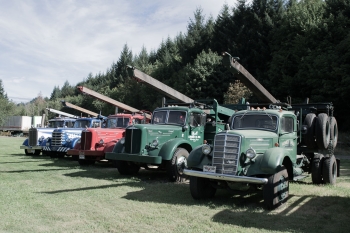According to a May 18 report by The Canadian Press, only one in four commercial vehicles over 4,500 kilograms passed safety inspections during a May inspection blitz in Alberta.
 My experience helping companies improve inspection processes tells me that this isn’t an isolated problem.
My experience helping companies improve inspection processes tells me that this isn’t an isolated problem.
Because vehicle safety inspections often aren’t done frequently enough, or thoroughly enough, there are lots of unsafe commercial vehicles on the road wherever you are—creating considerable risk for their drivers, the public, and the businesses that own them.
What the Blitz Found
Alberta police and transport officers stopped almost 500 trucks, semi-trailers, and other commercial vehicles, and a little more than half were immediately pulled off the road until safety issues were fixed.
Another 24 percent were cited for problems such as bad tires, improperly adjusted breaks, overweight loads, and loads that weren’t properly secured.
An approximately 75% failure rate isn’t too good!
The problem is on the rise, said Sgt. Kerry Bates of the Edmonton Police Service commercial vehicle unit.
“It is obviously not getting better,” Bates told The Canadian Press. “The drivers need to be more vigilant with their checks that they are supposed to be doing daily.”
Edmonton authorities promised to respond with heightened enforcement.
“We are on it,” said Alberta’s chief transport officer, Steve Callahan. “We understand that we have safety issues out there, and we are going to try and correct that.”
Lessons Learned
I draw three conclusions from Alberta’s crackdown:
- Law enforcement is actively checking to ensure that vehicles are safe, and their efforts are likely to increase. This is a business issue, but much more than that, it’s a public safety concern. Every driver wants the commercial vehicles on the road to be safe. Commercial vehicles (and their loads) can cause great harm, and the public is always behind enforcement campaigns such as Alberta’s recent blitz.
- Some businesses don’t understand the relationship between safety and profitability. They don’t inspect vehicles as they should because they’re overlooking the immense costs (liability, fines, lost work time, workers comp, damage to reputation, etc.) associated with an on-the-job accident due to an unsafe vehicle. There’s much more at stake than the penalties that come with being stopped in a non-compliant vehicle.
- Many businesses don’t have the right processes in place to ensure vehicle inspections are done regularly and properly. I think most businesses genuinely want to be safe and do understand the cost implications. However, they don’t have an inspection system in place that’s strong enough to achieve consistent accountability.
If you’re one of those companies that does place value on safety but still has issues with unsafe vehicles, you can address the problem by implementing a proven inspection system (e.g., The Checker) that helps personnel conduct inspections more easily while also documenting that they do so.
If your company is unclear about the relationship between safety and profitability, I urge you to download our complimentary whitepaper, Why Inspect Equipment?.
Takeaway
To keep your drivers, other drivers, and your business safe (and the law off your back!), commercial vehicles need to be regularly, thoroughly inspected.
Image courtesy of Visitor7, Creative Commons.










